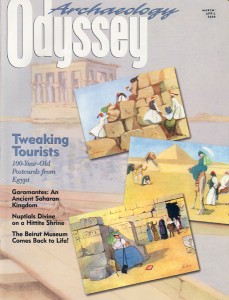When the earth shook, ancient Turkish and Greek monuments stood their ground
The ultimate (or penultimate) year of the second millennium A.D., 1999, was a sorrowful one in Turkey and Greece. More than 17,000 people died in the earthquake that struck southeast of Istanbul on August 17. In September and November, thousands of people were killed or left homeless by powerful tremors that ripped through the Greek province of Attica.
Until recently, these Mediterranean nations focused their energies on serious, immediate problems: searching for survivors, caring for the injured, sheltering the homeless. Now the governments of Turkey and Greece are assessing the loss of their cultural heritage. The Greek Ministry of Culture reports that a number of museums and historical sites were damaged in the quake that hit Athens on September 7. The fourth-century B.C. fortress at Phyle and the sixth-century A.D. Church of St. Nicholas in Daphni both suffered major damage and will require extensive renovations before they reopen. The National Archaeological Museum in Athens was also forced to close for three days while curators repaired exhibits in the classical pottery collection.
In Turkey, sections of Istanbul’s ancient city wall collapsed, and the famous Mihrimah Sultan Mosque (erected in 1547 A.D. in honor of the daughter of the Ottoman sultan Sulaiman the Magnificent) developed deep fissures in its walls and foundations. It is unlikely the mosque will survive another serious quake.
Already a library member? Log in here.
Institution user? Log in with your IP address.

